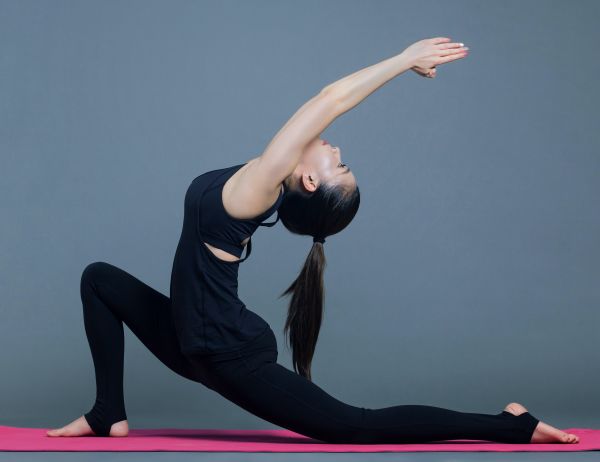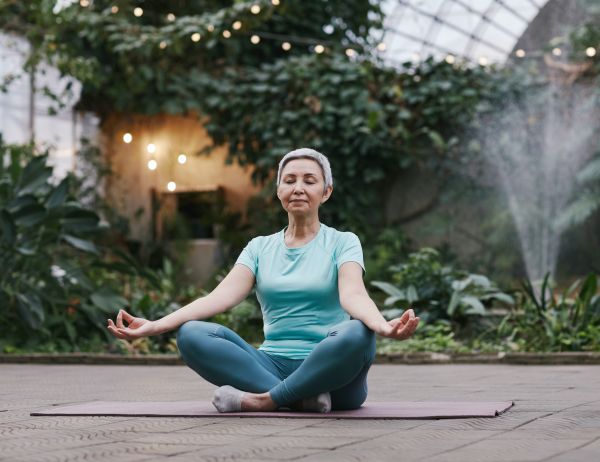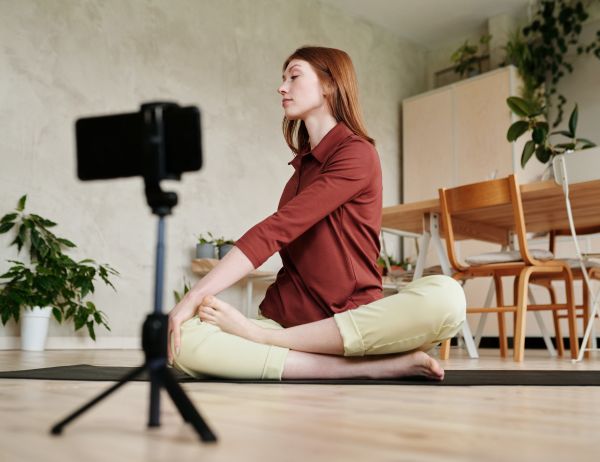The Crescent pose is a powerful kneeling, spinal stretching pose. It's not very beginner-friendly, so it's important to follow the steps in chronological order to get the most benefits from this pose.
Part 1 - Preparatory Poses for Anjaneyasana
To execute the Crescent moon pose properly, you'll need to start with some easy warm-up poses that prepare your back, abdomen, inner thighs, hip flexors, and knees for the main stretching pose and keep your muscles safe post-workout.
1. Utthita Trikonasana (Extended Triangle Pose) - Stand in a five-point star standing position and exhale as you bend your torso at one side, over your right leg. Rest your right palm over your right shin or on the mat.
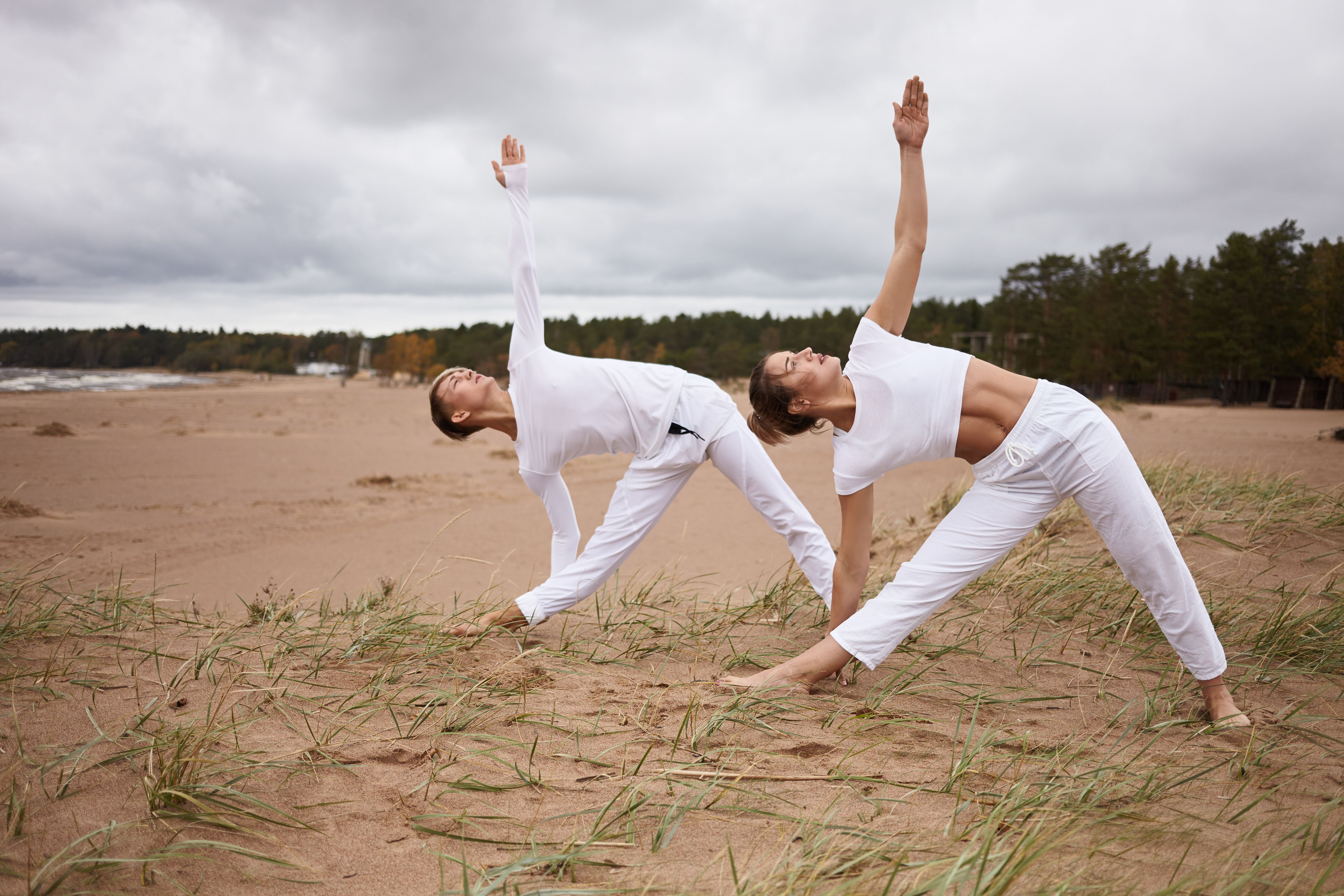
The Triangle pose activates the obliques, lower back, and inner thighs. It will also stretch hamstrings, glutes, and hip flexors. This pose will help you increase balance and blood circulation in your entire body. Hold this extended side stretch for a few seconds, and then repeat the same on the other side.
2. Utthita Ashwa Sanchalanasana (Runners Lunge Pose) - To get into the pose, start in a low lunge close to the mat with your right foot forward and your left foot behind you. Place both hands on the ground on either side of your right foot, and then slowly straighten your left leg. Keep your pelvis squared and your front knee directly over your ankle.
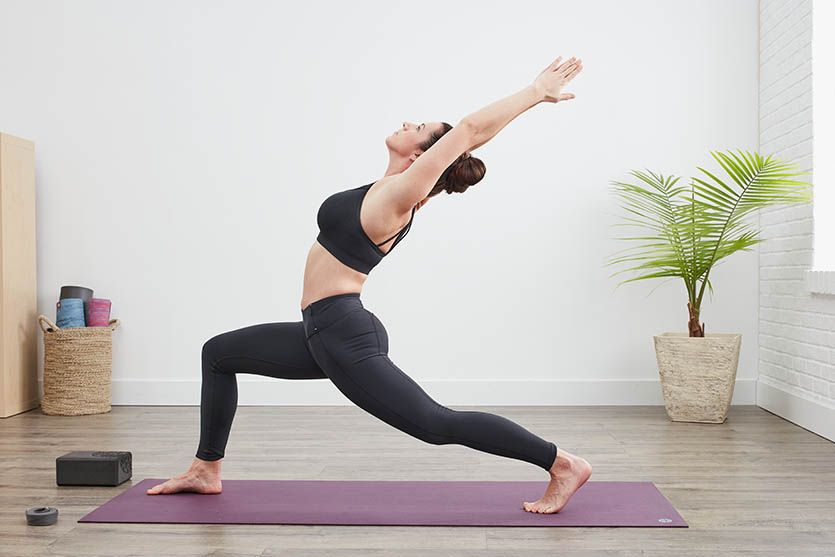
Make sure your knee is not over-extending past your foot. Maintain this pose here for a few deep breaths, and repeat the same on the other side. This yoga pose is a perfect way to activate your lower back, open up your hip flexors, and stretch out your thighs and groin.
Part 2: Step-by-Step Instructions to Perform Anjaneyasana
The following are steps to perform Anjaneyasana or Crescent Moon Pose:
Step 1- Start in the Runner's Lunge pose or Lizard pose and get lower on the mat by resting your right leg behind you on the ground.
Step 2- Keep your hips square as you bend your left knee to 90 degrees.
Step 3- Place your palms at your waist, and make sure your right knee is resting on the ground with toes pointed, and your heel facing up toward the ceiling.
Step 4- As you inhale, raise both arms overhead slowly, lengthening your spine and looking up toward the sky.
Step 5- Keep breathing and opening your chest and slightly drop your neck back to feel a minimal stretch in your neck as well.
Step 6- This step is optional: If your back feels comfortable enough, keep breathing and arching your spine until your spine forms a crescent moon shape.
Step 7- Hold this pose here for 5-10 breaths. Slowly come back up and relax for a few seconds. Finally, repeat on the other side.
Breathe Awareness -
Inhalation: Inhale as you raise your arms overhead and flex your spine in crescent moon shape.
Exhalation: When your spine comes back to a neutral position during relaxation.
Inhale & Exhale: As you maintain this pose for a longer duration or while flexing the spine deeper.
Performance Duration for Beginners: Hold Anjaneyasana for 4-8 deep breaths on each side.
Performance Duration for Advanced: Hold Anjaneyasana for 1-3 minutes on each side.
Part 3: Things to Keep in Mind
The following are some alignment cues that are essential for the safe execution of the Crescent Moon pose:
Do not overextend your knee: When your front leg is bent, make sure your knee does not go beyond your ankle. This will ensure that your knee is not over-extended and remains safe. If you overextend, you can cause wear and tear in the quads, which can cause pain or even lead to a severe knee injury.
Keep your core engaged: Activate your core muscles by drawing your navel in toward your spine. This will help you retain your body balance and alignment while one knee is flexed behind you and one foot is placed in front.
Keep your shoulders relaxed: Let your arms hang heavy by your sides and relax your shoulders. This will help you avoid tension, pain, or injury in your neck and shoulders.
Gaze upwards: Keep your gaze fixed on a point in front of and slightly above you, like where a wall and a ceiling meet. This will help you stabilize your body and prevent unnecessary straining of the neck.
Part 4: Relaxing Poses After Anjaneyasana
After practicing this challenging spine bending pose, it is important to take some time to relax your back muscles and allow your body to recover.
Here are some poses that can help you relax after your Crescent Moon practice:
1. Uttanasana (Standing Forward Bend Pose) - This is a great counter pose to help relax your hamstrings, shoulders, and low back. To perform Uttanasana, stand with your feet less than hip-width apart.
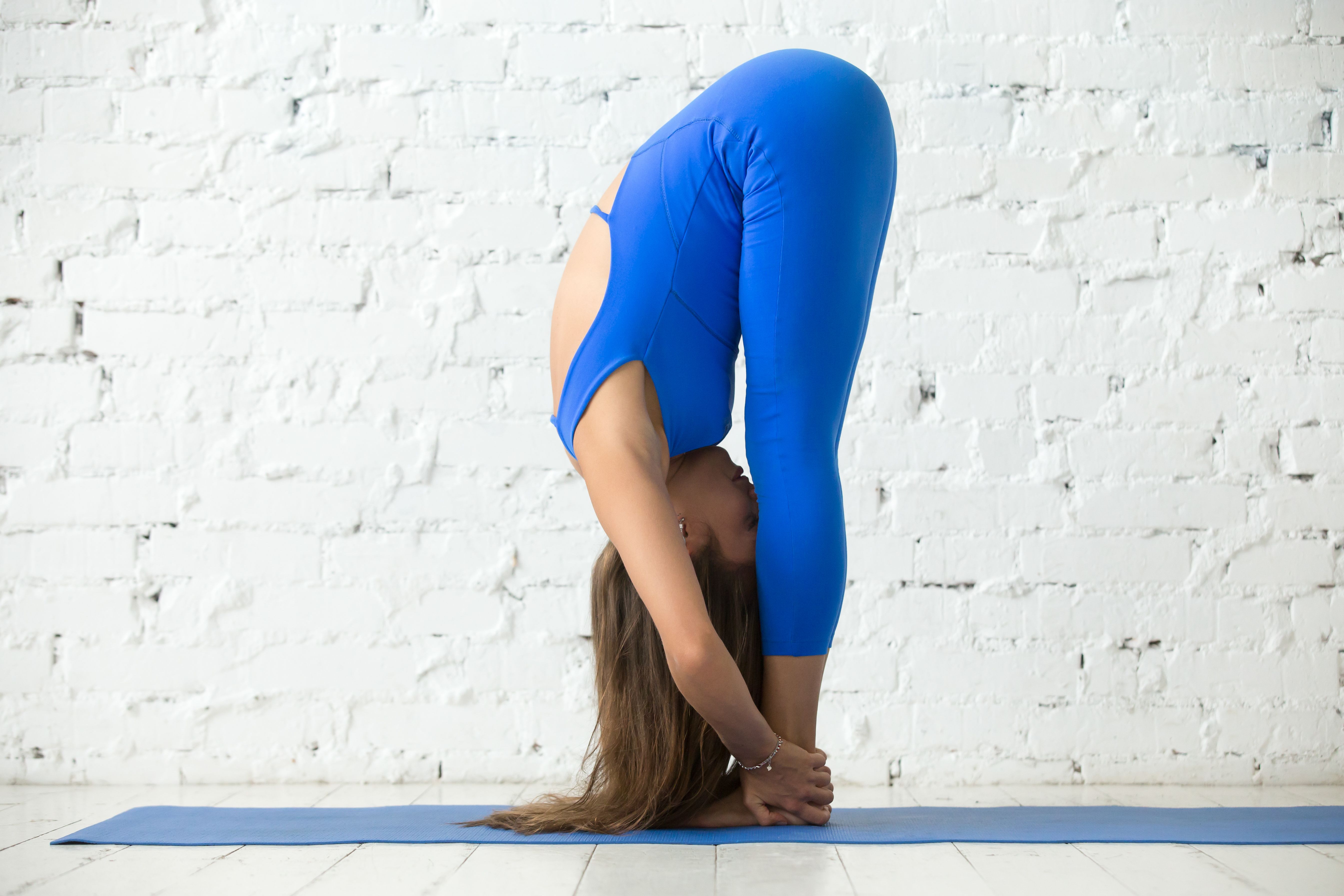
Inhale, lift your arms overhead and lengthen your spine. As you exhale, fold forward from your torso and rest your forehead against your knees, keeping your back flat. Let your arms hang loosely in front. Stay in this pose for at least 10 to 50 seconds.
2. Ardha Kapotasana (Half Pigeon Pose/Resting Pigeon Pose) - This pose is helpful in relaxing your low back, pelvis, and hamstrings on a deeper level, by changing your front leg position on the mat from the low lunge position.
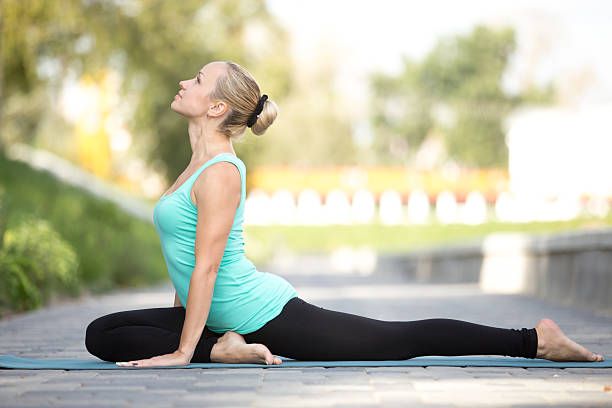
Place your front leg horizontally between your hands and rest your pelvis completely on the ground. You can either sit here or bend your upper body forward on the ground to relax your spine and legs even further. Hold this pose on each side for one minute.



